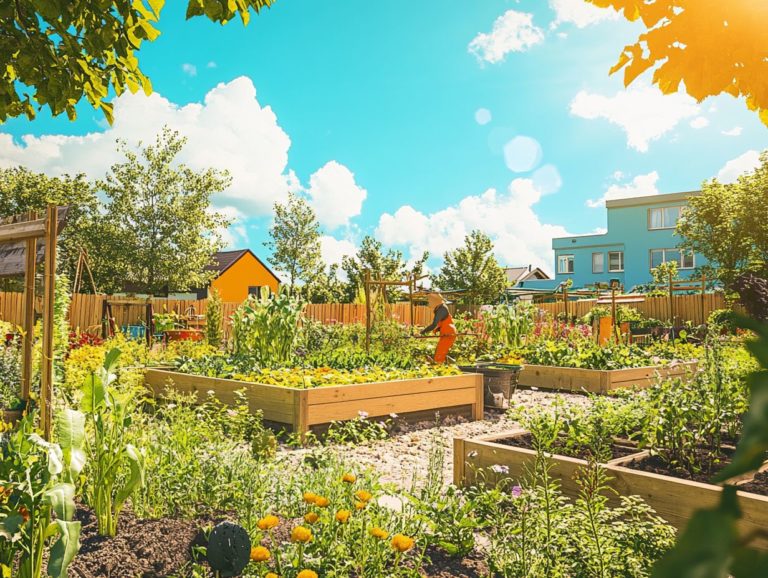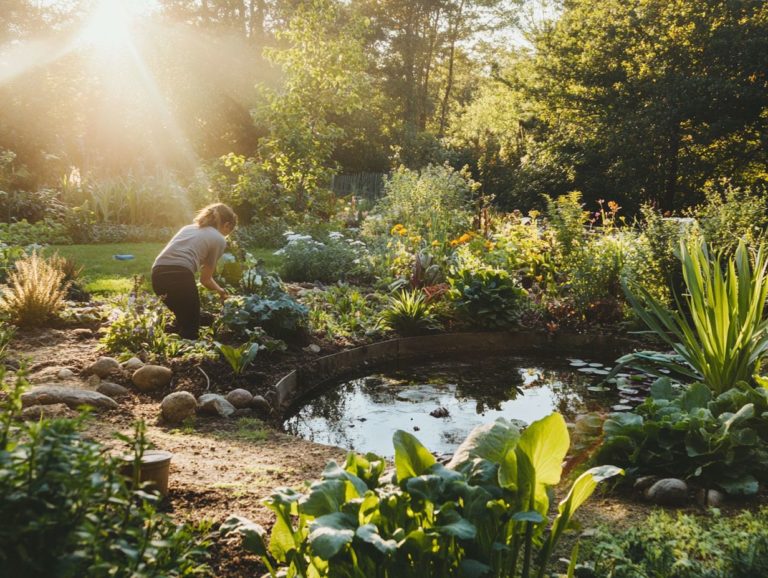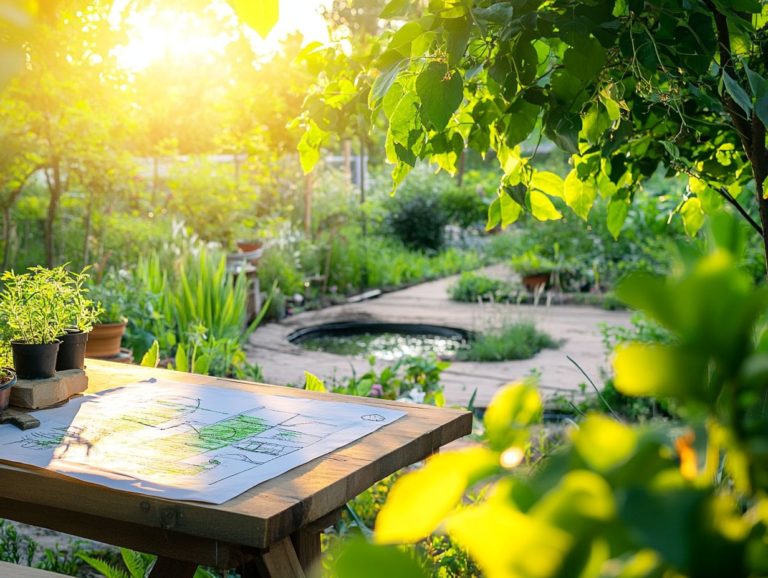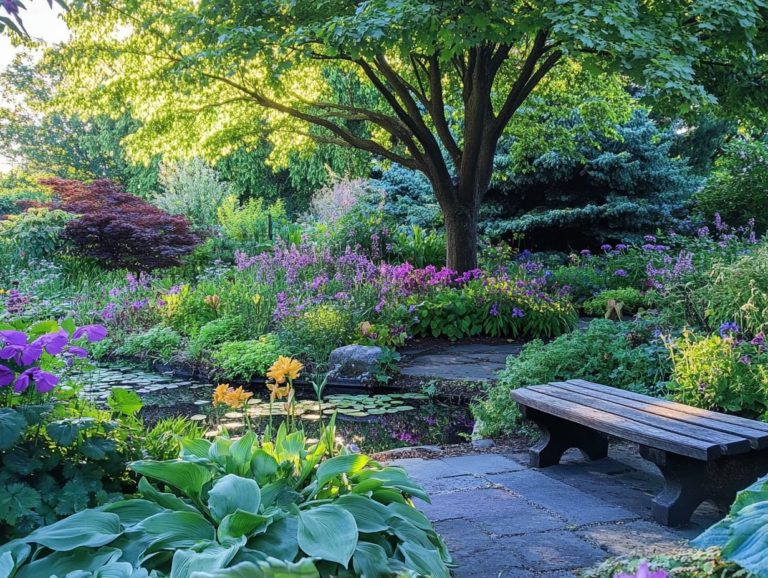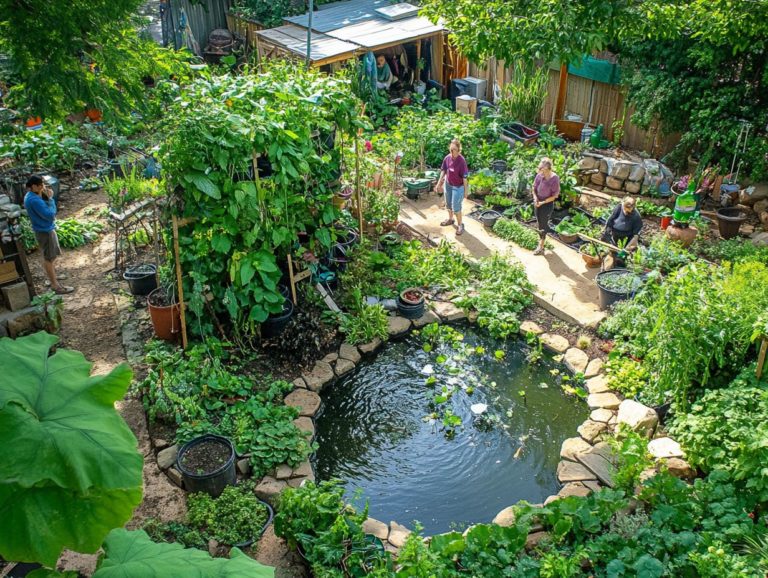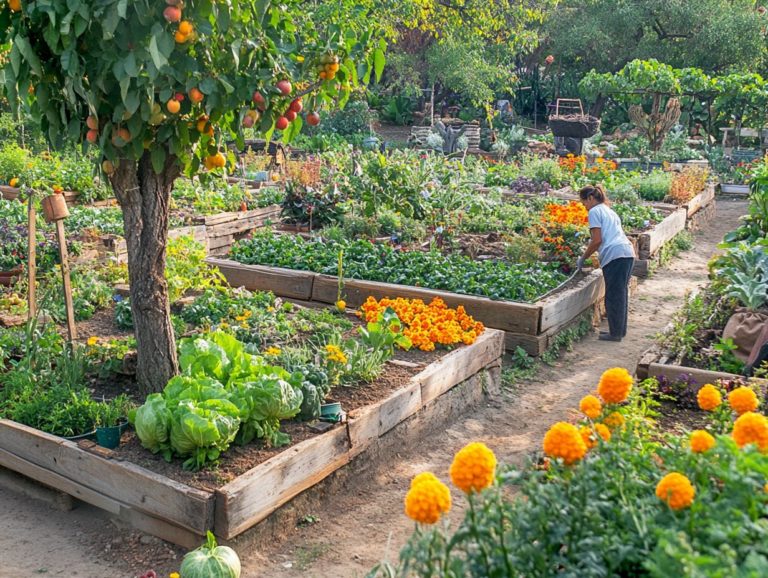Permaculture Design: Creating a Self-Sustaining System
Permaculture transcends the realm of mere gardening techniques; it embodies a holistic approach to cultivating sustainable ecosystems that exist in harmony with nature.
Dive into the fundamental principles of permaculture design! Discover essential concepts that will help you craft a thriving, self-sustaining system. You will explore everything from crafting a comprehensive design plan to effective implementation and long-term maintenance, uncovering the myriad benefits this innovative system has to offer.
We will tackle common challenges head-on and provide practical solutions, ensuring you are thoroughly equipped to embark on your own permaculture journey with confidence.
Contents
- Key Takeaways:
- Principles of Permaculture Design
- Designing a Self-Sustaining System
- Implementing and Maintaining a Permaculture System
- Benefits of Permaculture Design
- Challenges and Solutions in Permaculture Design
- Frequently Asked Questions
- What is Permaculture Design?
- Why is it important to create a self-sustaining system in permaculture design?
- What are some key principles of permaculture design?
- How can I incorporate permaculture design into my own garden or farm?
- What are some benefits of using permaculture design in agriculture?
- What are some common misconceptions about permaculture design?
Key Takeaways:
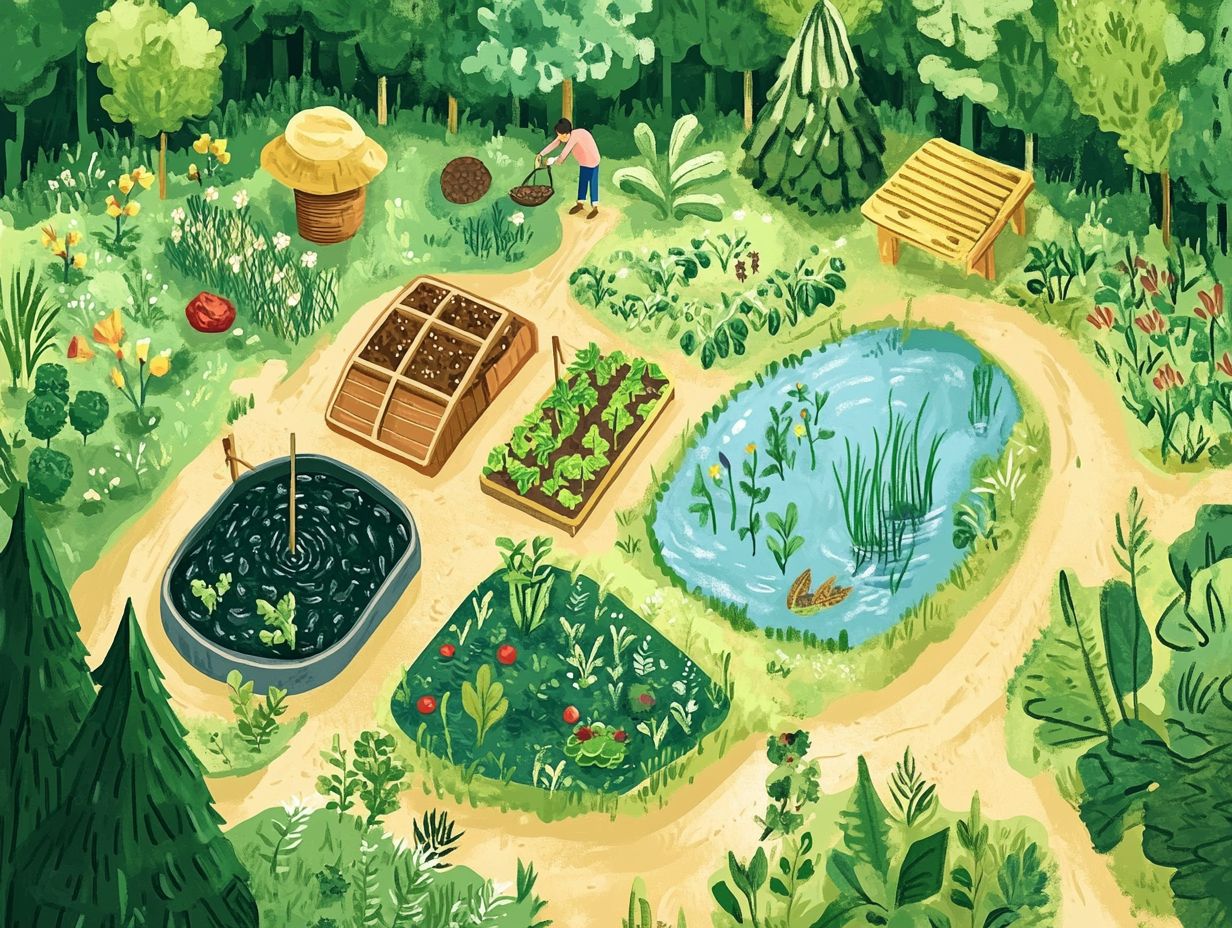
- Permaculture is a design approach that aims to create a self-sustaining system by mimicking nature’s patterns and principles.
- Creating a permaculture system involves designing with key concepts and guidelines in mind, carefully selecting and arranging elements to support each other.
- Implementing and maintaining a permaculture system requires building and managing a garden and making long-term adaptations. The benefits of a healthy environment and personal fulfillment make it worth the effort.
What is Permaculture?
Permaculture, a concept introduced by Bill Mollison and David Holmgren, serves as a sophisticated design framework that champions sustainable solutions and fosters a harmonious relationship with natural ecosystems.
By harnessing principles of ecological balance, energy cycling (which means reusing waste from one part of the system as resources for another), and biodiversity, it merges agricultural techniques with environmental stewardship. This ultimately creates self-sustaining ecosystems that stand resilient in the face of climate change and environmental degradation.
The roots of permaculture trace back to the 1970s. During this period, its founders aimed to tackle the pressing issues of food security and the environmental crises spurred by conventional farming practices. At its core, permaculture emphasizes essential principles such as observing natural systems, valuing diversity, and integrating functions within the landscape instead of separating them.
The practical applications of permaculture are vast, extending from small-scale urban gardens to expansive agricultural farms. Techniques like agroforestry and companion planting not only enhance crop yields but also nurture soil health. For example, integrating fruit trees with vegetable crops optimizes space and bolsters biodiversity.
Permaculture plays a key role in sustainable energy practices, leveraging solar panels and wind turbines to reduce carbon footprints. By fostering diverse ecosystems and minimizing dependency on fossil fuels, permaculture actively enhances biodiversity and contributes to the overarching battle against climate change.
Principles of Permaculture Design
The principles of permaculture design serve as essential guidelines that shape your sustainable practices. By following these principles, you create systems that are highly productive, minimize environmental impact, and enhance community resilience.
Key Concepts and Guidelines
Key concepts and guidelines in permaculture center around energy cycling, the significance of biodiversity, and the creation of closed systems that maximize resource recycling while tackling environmental challenges.
These principles work together seamlessly to cultivate environments that not only sustain life but also enhance ecological health. By promoting a diverse range of plant species, you can foster a system where natural pest control thrives, minimizing the need for chemical interventions.
Energy cycling illustrates a practical application of these concepts. For example, you can compost kitchen scraps to enrich your soil, benefiting your vegetable gardens and ultimately bolstering local food systems.
These practices highlight how thoughtful resource recycling can preserve natural ecosystems, ensuring a harmonious balance between human activities and the environment.
Designing a Self-Sustaining System
Designing a self-sustaining system requires you to employ a thoughtful design framework that seamlessly integrates agricultural techniques, effective resource management, and a keen awareness of community health, drawing inspiration from permaculture design.
Create systems that thrive on their own and reduce your workload while minimizing the need for constant external input.
Elements of a Permaculture System
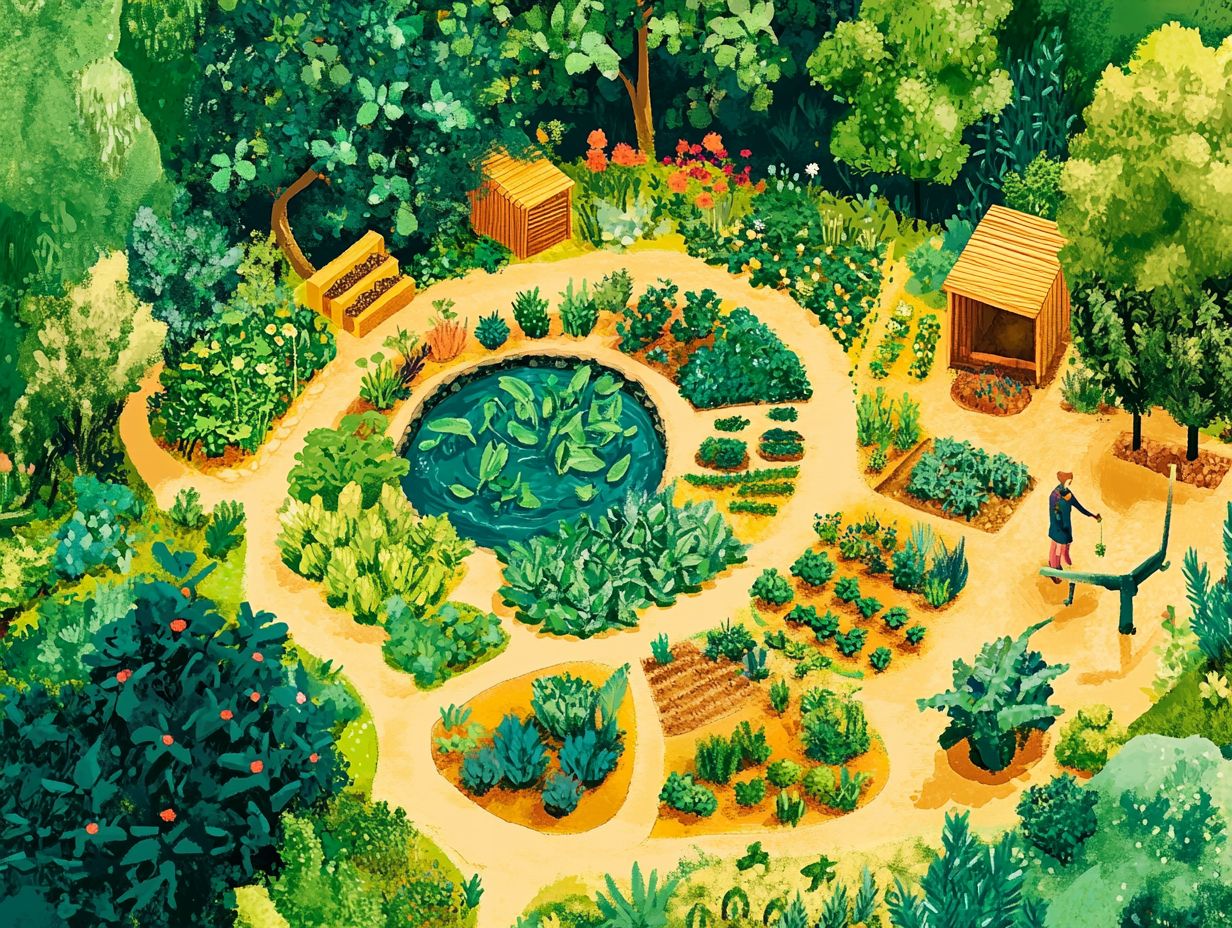
The elements of a permaculture system encompass a variety of components plants, animals, and energy systems that interact harmoniously to create a thriving, biodiversity-rich environment reminiscent of natural ecosystems.
In this intricate web, plants do more than just provide sustenance; they are essential for soil health, facilitating nutrient cycling and offering habitats for microorganisms. Animals play their part as well by helping with pest control and contributing organic matter through their waste, further enriching the soil.
Energy systems, including effective water management and renewable energy sources, are crucial for maintaining overall efficiency. The interdependence of these elements cultivates resilience, minimizes waste, and enhances sustainability. This holistic approach to agriculture adapts and flourishes in the face of changing environmental conditions.
Creating a Design Plan
Creating a design plan for your permaculture system requires careful planning and layout that aligns with sustainability principles, resource management, and community resilience, while embracing permaculture design: utilizing local resources and embodying effective environmental stewardship.
By integrating zoning into your plan, you can strategically arrange different elements based on their functions and needs, optimizing your land use significantly.
Thoughtful resource allocation allows you to utilize energy, water, and nutrient sources wisely, minimizing waste and enhancing efficiency.
Don t overlook the social aspects; community involvement and educational initiatives are key. They nurture a sense of ownership and shared responsibility among all participants. These interconnected components work in harmony, fostering the environment and creating vibrant ecosystems that can endure and thrive over time.
Implementing and Maintaining a Permaculture System
Implementing and maintaining a permaculture system demands your unwavering commitment to ongoing care and adaptation. Nurturing the ecosystem helps promote community well-being and demonstrates environmental stewardship, as highlighted in permaculture design: the power of observation.
Your dedication is crucial to creating a thriving and sustainable environment that benefits all.
Building and Managing a Permaculture Garden
Building and managing a permaculture garden requires thoughtful planning and practices designed to enhance biodiversity, recycle organic waste through composting, and optimize energy systems for sustainability, as explored in permaculture design: patterns in nature.
To embark on this fulfilling journey, you must first prepare the soil. This preparation might involve testing nutrient levels and assessing the soil’s structure to ensure it is in optimal health.
Once the soil is ready, selecting a diverse array of plants that thrive in your local climate will maximize both productivity and resilience. Embracing companion planting growing different plants together for mutual benefits can further boost growth while effectively suppressing pests.
Incorporating irrigation methods such as rainwater harvesting and drip systems will help conserve water. Beyond these essential practices, composting plays a crucial role in enriching the soil, returning vital nutrients, and fostering a self-sustaining ecosystem.
Energy cycling also contributes to maintaining the balance necessary for vibrant plant life. This approach nurtures your garden and aligns with sustainable living principles.
Long-Term Maintenance and Adaptations
Long-term maintenance and adaptations of your permaculture system are vital for achieving ecological balance and cultivating a thriving ecosystem that supports community health and sustainability.
These efforts require you to keep a close eye on how the various elements of the ecosystem interact and respond to environmental changes. You ll need to make thoughtful adjustments to accommodate shifting climatic conditions or resource availability, ensuring your system remains resilient.
Fostering biodiversity is essential. A rich tapestry of plants, animals, and microorganisms will enhance both the stability and productivity of your permaculture system.
Implementing strategies for maintaining closed systems involves careful planning to manage resources, efficient waste management, and mindful water usage all of which contribute to long-term sustainability while minimizing your ecological footprint.
Benefits of Permaculture Design
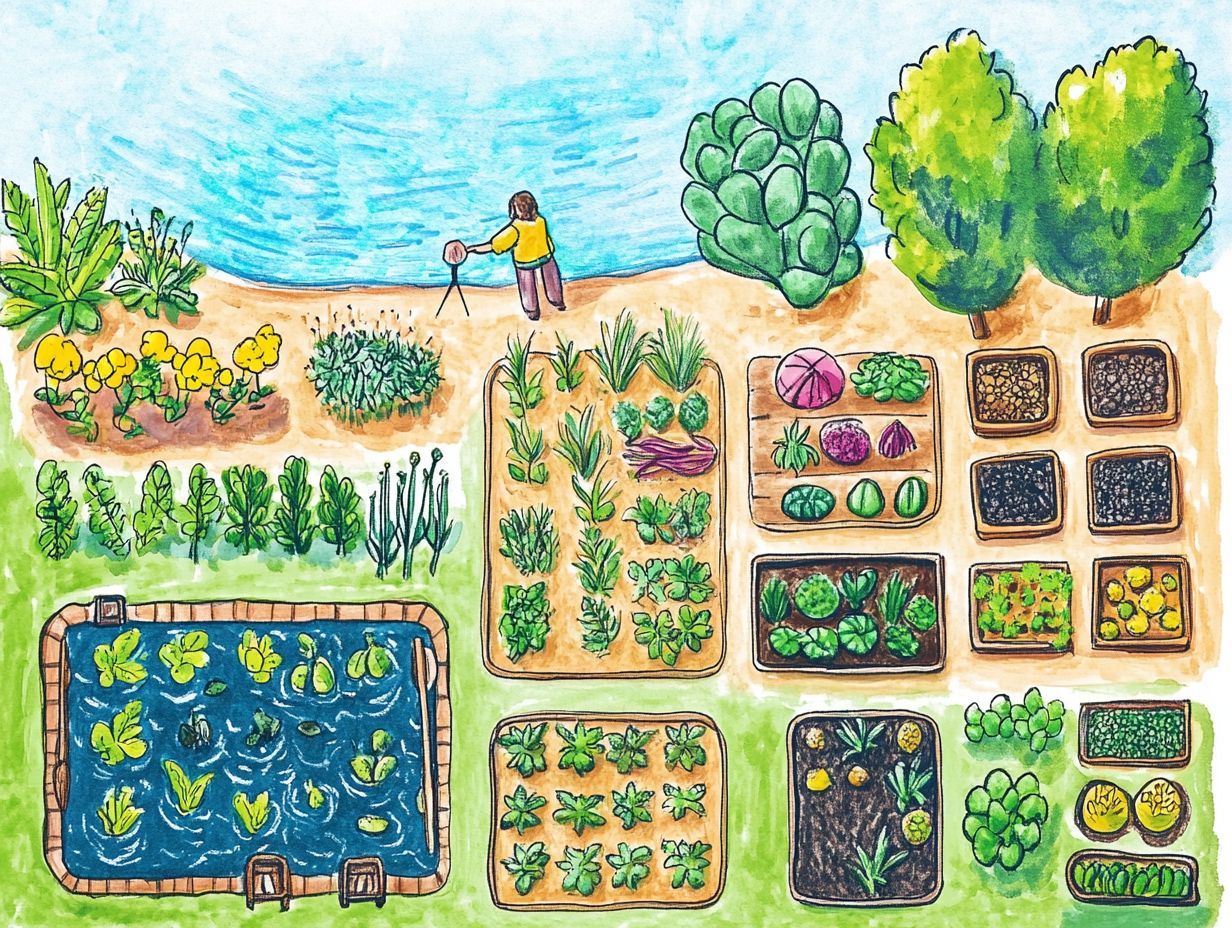
The advantages of permaculture design reach far beyond personal gardens, enhancing environmental health, fostering community resilience, and bolstering food security through sustainable practices and effective resource management.
By embracing this holistic approach, you contribute to a thriving ecosystem that benefits both people and the planet!
Environmental and Personal Benefits
Permaculture design presents a wealth of environmental and personal benefits, from enhancing biodiversity to promoting sustainable energy practices and nurturing community health.
By integrating organic farming techniques with natural ecosystems, you not only reduce your carbon footprint (the total greenhouse gases produced by your actions, which contribute to climate change) but also support the revival of native species. This fosters a harmonious relationship between humanity and nature.
Embracing these practices often leads to a profound transformation in your well-being, as you enjoy fresher, chemical-free produce while deepening your connection to the environment.
Using renewable resources is a fantastic way to help our planet! It paves the way for a sustainable lifestyle that benefits the planet, resulting in cleaner air and a more vibrant community for everyone involved.
Challenges and Solutions in Permaculture Design
In permaculture design, you may encounter a range of challenges stemming from environmental factors and resource management issues. Understanding permaculture design ethics and principles can provide innovative solutions as you work to create resilient systems that thrive in harmony with nature.
Common Obstacles and Strategies for Overcoming Them
Common obstacles in permaculture design may include limited resources, challenging environmental conditions, and gaps in knowledge. However, you can employ effective strategies to overcome these hurdles.
To address these challenges, it s essential for you to actively engage with your local community, fostering a spirit of collaboration and shared learning. Hosting workshops and educational events can empower individuals with the skills needed to implement sustainable practices.
Establishing networks for resource-sharing can significantly ease the burden of insufficient materials. Community gardens, for example, not only provide a source of fresh produce but also serve as a vibrant platform for exchanging seeds, tools, and knowledge.
This enriches the collective understanding and resilience of your permaculture initiatives, creating a thriving ecosystem for all involved.
Frequently Asked Questions
What is Permaculture Design?
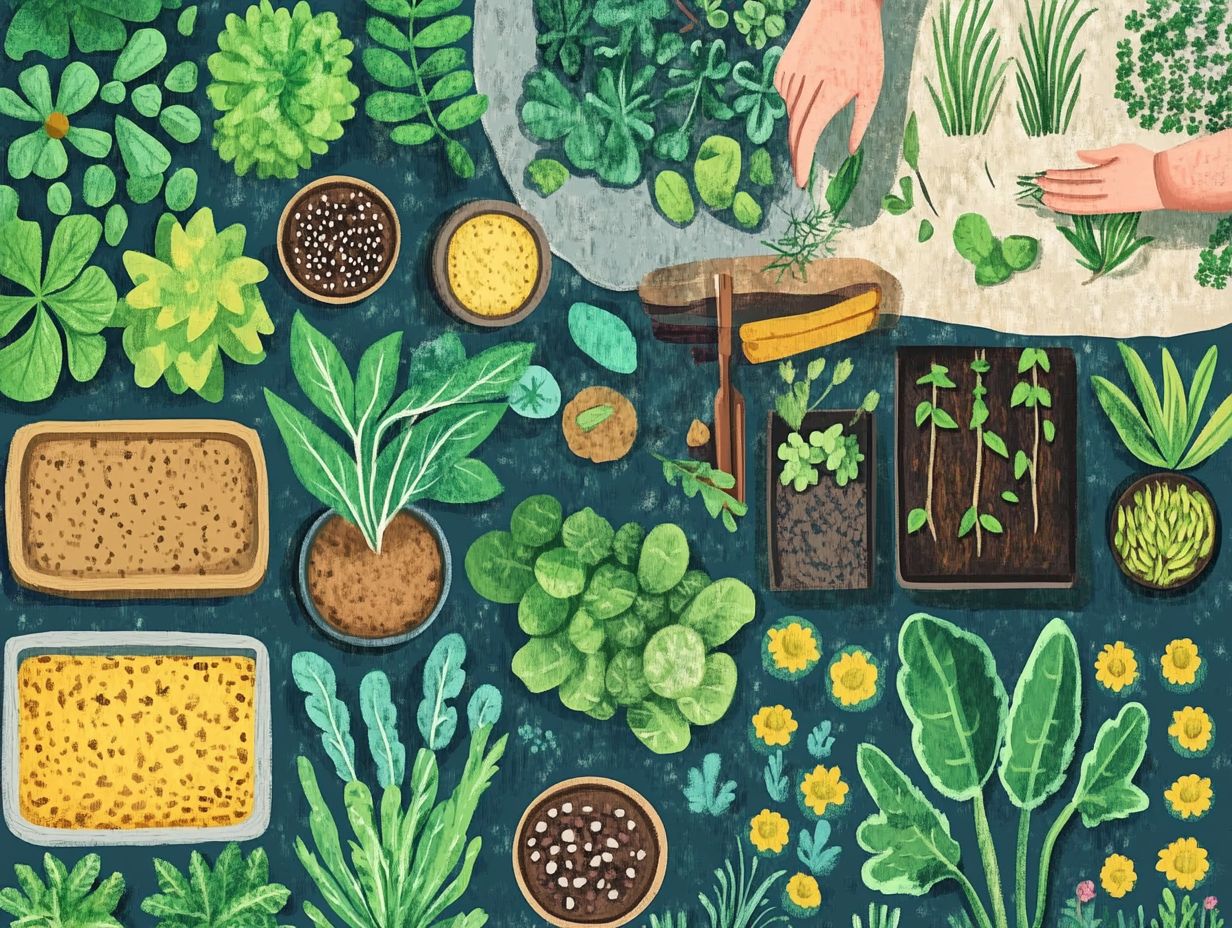
Permaculture Design is a sustainable approach to designing human settlements and agricultural systems that mimic the patterns and relationships found in nature, as outlined in Permaculture Design: Working with Nature.
Why is it important to create a self-sustaining system in permaculture design?
Creating a self-sustaining system in permaculture design for sustainability is important because it reduces the reliance on external resources, promotes biodiversity, and creates a more resilient and efficient ecosystem.
What are some key principles of permaculture design?
Key principles of permaculture design include observation, interaction, renewable resources, integration, and diversity. To learn more about these concepts, consider exploring understanding the permaculture design process. Think of it as designing systems that work in harmony with nature.
How can I incorporate permaculture design into my own garden or farm?
You can apply permaculture principles in your garden or farm by planting a variety of crops together. Use natural pest control methods and collect rainwater to make your system more sustainable!
What are some benefits of using permaculture design in agriculture?
Using permaculture can increase soil fertility and health. It also reduces water usage and boosts crop yields!
What are some common misconceptions about permaculture design?
Many think permaculture is only for rural areas or that it requires a lot of space. In reality, you can use permaculture techniques anywhere, and they can save you money over time!

